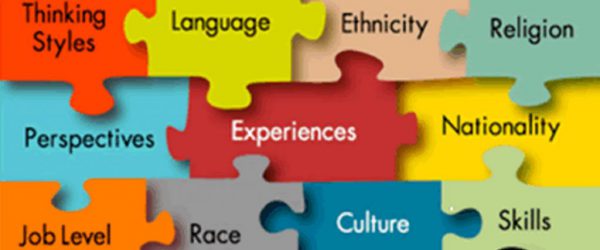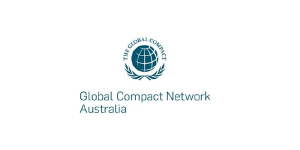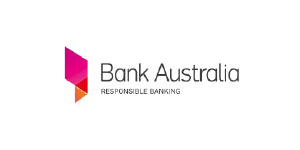
Businesses focused solely on ‘diversity’ are missing the bigger picture
Over the last several years, we’ve seen a landslide of companies prioritizing diversity. They often, however, leave out the idea of inclusion, which is perhaps the most important aspect of building strong, collaborative teams that pivot upon each member’s strengths.
Unlike focusing on diversity, which is rather straightforward in theory, the concept of inclusivity can be difficult to implement because it takes a tremendous amount of creative thought, effort and execution on behalf of leadership. Creating an inclusive culture ranges from figuring out a process by which employees can freely give input on new products to systematically finding ways for employees from various departments to collaborate.
Today’s businesses need to be both diverse and inclusive, and we’re all just-now learning how to do it.
Sumun Pendakur, associate dean for Institutional Diversity at Harvey Mudd College comments on the two-pronged practice: “Diversity and inclusion are two related but different conversations. Often, workplace efforts stop at diversity — have we done our best to build a team that is representative of diverse backgrounds, cultures and viewpoints? But diversity without inclusion can lead to friction because the organization has not invested time in enabling all team members to be full participants.”
To break it down and strip away the buzz factor of the term “inclusivity,” just think of it as a fancy moniker for collaborative, collective thinking.
CEO of Carnival Corporation Arnold W. Donald says, “Great ideas and great problem-solving can come from anywhere, and the collective power of all of those different viewpoints is much stronger than what you see from people who all think alike. Working with a talented, diverse group is always going to generate better ideas than if you just think about a problem by yourself.”
Maybe now you’re sold on the idea that organizations must be both diverse and inclusive, but how do you begin to build a company that embodies both? We spoke to a few experts to help identify the key tenets for building organizations that thrive off diversity and inclusive collaboration.
1. Don’t buy into the myths
When it comes to creating a diverse and inclusive workplace, we’re all too quick to make excuses: It’s too hard. There aren’t enough X people in the X talent pool. People here aren’t interested in doing that. The list of excuses goes on, and we can continue to blame everyone but ourselves, but high-level leaders must first admit there is a problem before they can take steps to solve it.
Lisa Keglovitz, vice president of human resources at GameStop, shares, “Building a truly diverse and inclusive culture includes responding patiently and sensitively to the unconscious biases that currently exist.”
The key word here is “unconscious,” which is so often why exclusive trains of thought go unnoticed. We’ve been doing it, unknowingly, for far too long.
2. Train any and all hiring committees in bias reduction
Once you admit there’s a problem, consider those responsible for recruiting talent. Pendakur suggests that all hiring committees should be trained in implicit bias reduction.
“Ideally, [the hiring committees] would have spent time broadening and deepening their pool of applicants,” she says. Note the word “time” — it takes time and resources to increase diversity, yet for some reason this important initiative seems to continually get the shaft.
The work doesn’t stop there, though.
Once your hiring efforts are in check, some of the onus shifts to managers. Diane Frisch, senior vice president of human resources at Ingredion Incorporated agrees.
“It’s not enough to recruit diversity into the organization,” she says. “Once you create a diverse workforce, it is absolutely crucial that leaders know how to leverage that diverse talent.”
Fisch is implementing a program meant to assess the cultural competence of its senior leaders. The program offers senior leaders in-depth feedback on their ability to understand differences in the workplace, and provides them with individual coaching in order to improve their capability of leading in an inclusive fashion.
3. Ask your employees how to implement change, and listen to them
When it comes to how to best implement change, look to your employees and hear them out.
“Your customers and trade partners will tell you what you need to do, and your employees will tell you how to do it,” says Donald. “When it comes to building a diverse and inclusive workplace, apply the same train of thought and ask your employees how they would create a more diverse and inclusive workplace.”
“My premise is that if you know how to really listen to people, then they feel better about their contributions. At the same time, the answers you need for the business will reveal themselves,” he adds.
You may not agree with every point of feedback, but that’s okay. Keep listening, and allow your employees to be heard even if you don’t use every suggestion.
“We’re asking questions and listening so we can create a culture that embraces the idea that we don’t have to agree with feedback to respond favorably to it,” says Keglovitz. “We’re putting the focus on each person … this ensures that we don’t overlook the powerful, entrepreneurial ideas of individuals.”
4. Designate someone to lead the charge, but hold everyone accountable
To make “D&I” happen, you need a committed leader who will treat the task as a high priority.
That’s what Pendakur’s role at Harvey Mudd College is all about. She suggests, “Optimally, an organization would have a dedicated, high-level employee who functions as the Chief Diversity Officer (or some similar title). But it’s equally important to have team leaders in all areas who are culturally competent and well-trained in diversity and inclusion, because it’s not only one person’s job to ensure a culture of inclusion and respect. Inclusion goes way beyond compliance.”
Frisch believes that not only does there need to be an internal champion setting the tone at the top, but the whole leadership team also needs to take part.
“We established an inclusion council made up of senior leaders from across the enterprise,” she says. “The council is responsible for analyzing needs, recommending strategies, and ensuring effective implementation of diversity and inclusion efforts.”
Frisch and Ingredion Incorporated’s CEO co-chair the council. This structure ensures that the CEO is able to lead diversity and inclusion efforts with the executive leadership team.
5. Develop and implement a cross-divisional mentoring program
If you’re a smaller company and a diversity-and-inclusion council feels too far out of reach due to resource restraints, fear not. Cross-divisional mentoring programs can be an attainable first step that can make a big impact. Ideally, a program like this would be led by an employee resource group with a clear mission for change, and would pair entry-level and mid-level team members.
If you’ve done all of the above, and you’re looking for a sign of success, consider this: “Critical mass is difficult to assess, but you would know it when there isn’t only one dominant point of view that guides all decisions. You would see [minorities] (women and men of color, LGBTQ employees, etc.) in leadership roles, not just in the stockroom or in administrative assistant roles,” says Pendakur.
Hopefully someday soon, we’ll all start considering diversity and inclusion not just a “nice-to-have” but, rather, a necessity.
This article by Rebekah Iliff was published on Mashable Australia



















